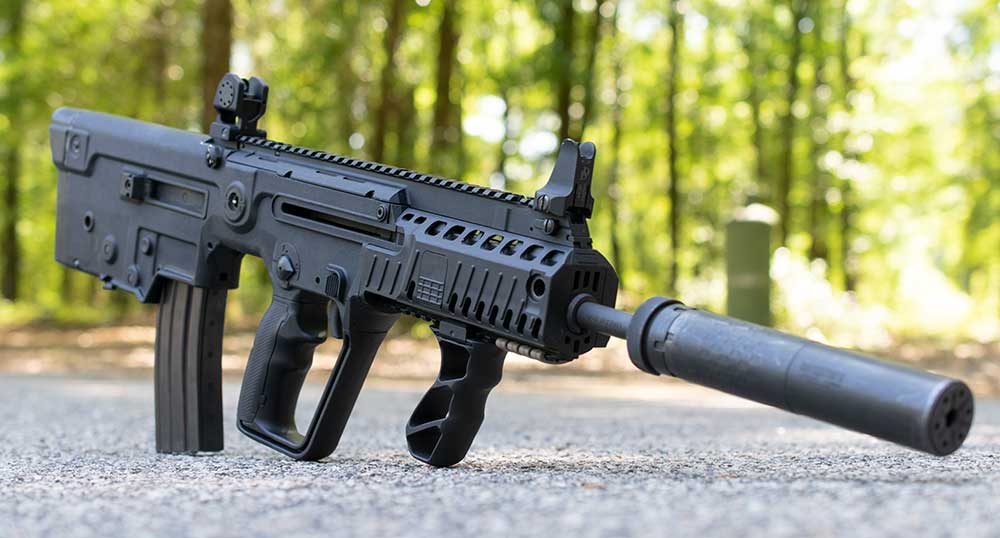Understanding the Fifth Circuit Ruling on Suppressors
The recent ruling by the U.S. Court of Appeals for the Fifth Circuit in United States v. Peterson has sparked substantial discussions regarding the classification of suppressors and their relationship with Second Amendment rights.
Case Background
The case centers around George Peterson, who owns PDW Solutions, LLC, and faced charges in 2022 for possessing an unregistered suppressor, which is regulated under the National Firearms Act (NFA). Peterson’s defense claimed that the NFA’s requirements are unconstitutional under the Second Amendment and that the search conducted by the Bureau of Alcohol, Tobacco, Firearms and Explosives (ATF) violated his Fourth Amendment rights. The district court ruled in favor of the government, a decision that was later upheld by the Fifth Circuit earlier this year.
Key Legal Findings
A pivotal aspect of the case is whether suppressors can be classified as “arms” protected by the Second Amendment. The Fifth Circuit determined that suppressors do not fall under this category, labeling them as “accessories” instead of core components of firearms. This interpretation has drawn criticism, particularly from organizations such as the Firearms Policy Coalition (FPC) and the FPC Action Foundation (FPCAF), which have called for a full en banc review of the decision.
The Importance of Suppressors
Suppressors play a significant role in firearm safety and are often misunderstood. Unlike the exaggerated depictions found in films, modern suppressors operate similarly to car mufflers, reducing gunshot noise to safer levels while still registering significantly loud. Research indicates that advanced suppressors can lower noise levels by around 20-30 decibels, bringing the volume down to approximately 140 decibels for popular rifles, still louder than an ambulance siren.
In addition to noise reduction, suppressors can diminish recoil and improve accuracy, benefiting both shooters and those nearby. Many nations, particularly in Europe, promote the use of suppressors as a public safety measure. However, the U.S. continues to enforce strict regulations under the NFA, complicating legal ownership.
Challenges in the Fifth Circuit’s Rationale
The reasoning of the Fifth Circuit has been perceived as problematic. By determining that suppressors are non-essential to the function of firearms, the court’s stance raises concerns about potential future implications. If suppressors can be excluded from Second Amendment protections, other firearm components such as magazines, barrels, and scopes could similarly be classified as “accessories,” rendering them vulnerable to regulatory measures.
This interpretation contradicts established rulings from the Supreme Court in cases like D.C. v. Heller and New York State Rifle & Pistol Association v. Bruen, which affirm that the Second Amendment protects weapons that are “in common use” for lawful purposes. With over four million suppressors legally owned in the U.S., their status as commonly used items is well established.
The Path Forward
The legal battle is far from over. The FPC and FPCAF are advocating for an en banc review, seeking to have the full Fifth Circuit reassess its decision. A positive outcome could reinforce the notion that suppressors—and potentially other firearm components—deserve protection under the Second Amendment.
If the en banc review is not granted, the case may escalate to the Supreme Court, which has recently shown a trend toward enhancing Second Amendment protections. There remains hope that the Court could overturn the existing NFA suppressor regulations entirely.
Implications for Gun Owners
If the Fifth Circuit’s ruling remains intact, its ramifications could be significant for gun owners. The decision could empower anti-gun legislators and regulators to impose restrictions on various firearm components. Should suppressors fall outside the category of “arms,” other items such as magazines, optics, and adjustable stocks might also be labeled as mere accessories, possibly facing similar limitations.
This ruling would also reinforce the NFA’s problematic framework, historically targeted by the regulation of lawful gun ownership. Given the ATF’s inconsistent enforcement and the ongoing narrative around gun control, advocates express concern that each piece of regulation chips away at Second Amendment rights.
How to Get Involved
Gun owners and supporters of Second Amendment rights are encouraged to stay informed and proactive. Organizations such as the Second Amendment Foundation spearhead legal challenges against unjust gun laws, but their efforts require backing from the community. Consider joining or donating to pro-gun advocacy groups that are litigating for the protection of firearm rights.
In addition, raising public awareness about the implications of this ruling is essential. Engage with friends, family, and fellow gun enthusiasts to discuss the case. Contacting your representatives and expressing support for legislation like the Hearing Protection Act, aimed at removing suppressors from NFA regulations, can also help amplify the message.
Conclusion
The Fifth Circuit’s decision in United States v. Peterson poses a serious threat to Second Amendment rights by categorizing suppressors as mere accessories. This ruling could potentially open the floodgates for further restrictions on essential firearm components. Nevertheless, with mounting legal action and strong support from the pro-gun community, there is a chance that this ruling will change.
Now is a crucial time for gun owners to unify and resist unconstitutional regulations. The Second Amendment guarantees the right to possess arms in their entirety, not just select components. If suppressors can be excluded from this protection, what future restrictions await?

